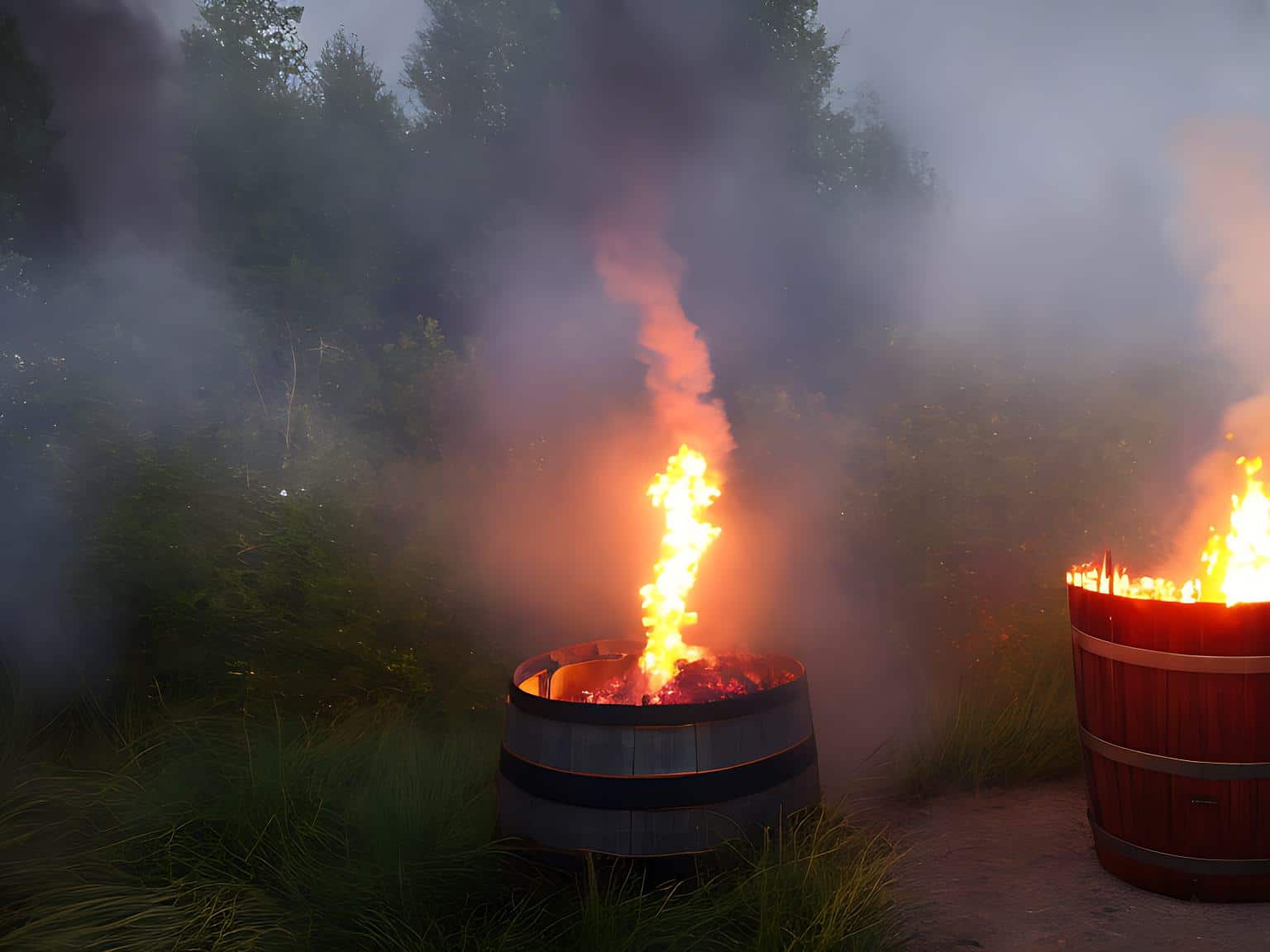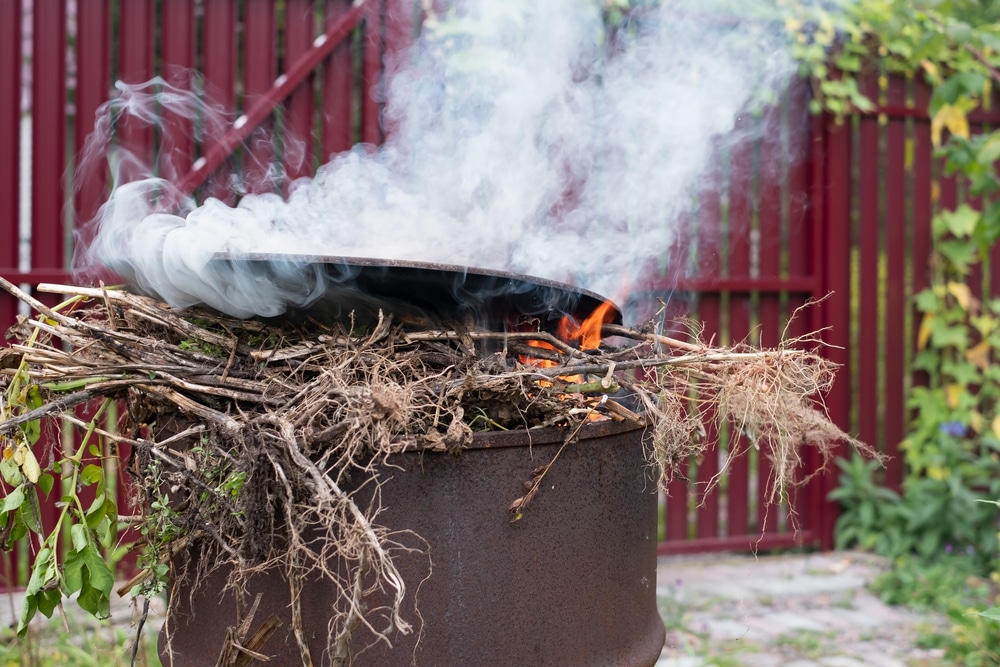Last Updated on
Gardening is a great way to relax and get in touch with nature. But did you know that garden incinerators can also be useful for more than just getting rid of unwanted debris? That’s right – if used correctly, an incinerator can actually help reduce the amount of waste sent to landfill. So, what can you burn in a garden incinerator? This article will provide all the answers, so read on and find out how these devices could revolutionise your gardening routine. Can you burn in a garden incinerator safely without any risk of pollution or harm to the environment? We’ll explore this question as well as looking at some other benefits that come from burning rubbish instead of sending it straight into landfills. Finally, we’ll discuss what not to put into your backyard furnace – after all, safety comes first.
Table of Contents:
- What Can You Burn in a Garden Incinerator?
- The Benefits of Burning in an Incinerator
- What Not to Burn
- FAQs in Relation to What Can You Burn in a Garden incinerator
- Conclusion
What Can You Burn in a Garden Incinerator?
A garden incinerator is a great way to get rid of combustible materials such as wood, paper, cardboard and other waste. It’s an efficient and safe way to dispose of these items without having to worry about them ending up in landfills or being left around your property.
When using an incinerator, it’s important to know what can be safely burned. Wood is the most common material that can be burned in a garden incinerator. This includes logs, branches, twigs and sawdust from DIY projects or furniture making. Paper products are also suitable for burning in an incinerator; this includes newspapers, magazines and cardboard boxes. Other combustible materials, such as plastic bags and food packaging should not be placed into the fire due to their potential release of toxic fumes when burnt at high temperatures.
It is not advisable to place any metals into the fire as some may contain hazardous substances which could become airborne when heated up sufficiently during combustion within the chamber. This can lead to potential health risks for those nearby who might inhale these potentially harmful particles released from burning metals inside your garden incinerator unit.
Finally, always ensure you have adequate ventilation when using any type of open-flame device such as a garden incinerator. This will help reduce smoke inhalation risk while allowing sufficient oxygen supply needed for the complete combustion process within its internal chamber area. Additionally, never put glass bottles or jars into your fire as these will shatter upon contact with heat-releasing shards which could cause serious injury if someone were unfortunate enough to come into contact with them after being ejected from the unit itself.
Knowing what can be burned in an incinerator is essential for safety and efficiency, and the next section will discuss the benefits of using one.
The Benefits of Burning in an Incinerator
Burning materials in an incinerator is a great way to reduce waste and help the environment. Incinerators are designed to burn combustible materials, such as wood, paper, plastic, and other organic matter at high temperatures. This process helps break down these materials into ash that can be disposed of safely. Burning also eliminates odours associated with decomposing organic matter and reduces the amount of space needed for landfills or compost piles.

The benefits of burning in an incinerator go beyond just reducing waste. Burning produces heat which can be used to generate electricity or hot water for homes and businesses. This makes it a cost-effective alternative to traditional heating sources like gas or oil boilers, saving money on energy bills while helping reduce emissions from fossil fuels. Additionally, burning certain types of material can produce biochar which is a type of charcoal that has been found to improve soil fertility when added back into the ground after being burned off in an incinerator.
When using an incinerator, it is essential to take certain safety precautions into consideration. Flammable liquids such as gasoline or kerosene should never be used and only dry materials should be burned. All embers must be fully extinguished before leaving the area, and protective clothing including gloves and goggles should always be worn when handling hot ashes. Fires must not ever be left unattended, and local laws concerning open burning regulations must always be adhered to.
Finally, it is important not to burn any hazardous materials such as paint cans, aerosol cans, tires or treated lumber since they may contain toxins that could contaminate air quality if released during combustion processes. It is also best not to burn plastics since this releases toxic fumes into the atmosphere which significantly contributes towards the global warming issues we face today.
Burning in an incinerator can be a great way to dispose of garden waste. However it is important to understand what not to burn in order to ensure safe and efficient use.
What Not to Burn
When it comes to burning in an incinerator, there are certain items that should never be placed inside. Plastics and metals are two of the most common materials that you should avoid at all costs. Plastics will not burn properly and can release toxic fumes into the air, while metals can cause sparks which could start a fire or damage your incinerator.
Other non-combustible materials such as glass, ceramics, rocks, stones and other similar items should also not be burned in an incinerator. These types of materials do not burn easily and can create dangerous shards when heated up too quickly. This could lead to injury if someone were to come into contact with them after they have been burned in an incinerator.
You should also avoid burning anything containing foam or rubber as these materials contain chemicals which may produce hazardous gases when burned at high temperatures. In addition, any item containing paint or varnish is best avoided as these substances often contain volatile organic compounds (VOCs) which are harmful to both humans and animals alike when inhaled over long periods of time.
Finally, make sure you don’t put any medical waste such as syringes or bandages into your garden incinerator either. This type of material needs to be disposed of correctly according to local regulations. Otherwise, it could cause serious harm if handled incorrectly by anyone who comes across it afterwards.
FAQs in Relation to What Can You Burn in a Garden incinerator
What cannot be burnt in an incinerator?

Incinerators are designed to burn combustible materials, such as paper, wood and other organic matter. However, there are some items that should never be burned in an incinerator due to the risk of releasing hazardous chemicals into the environment. These include plastic products (including packaging), paint or varnish cans, aerosol cans, rubber products (such as tires), batteries and electronic equipment. Burning these items can release toxic fumes and particles into the air which can cause health problems for people living nearby. It is important to dispose of these items responsibly by taking them to a recycling centre or hazardous waste facility instead of burning them in an incinerator.
What types of waste can be incinerated?
Incineration is the process of burning waste materials to generate energy. In the UK, only certain types of waste can be incinerated, including combustible municipal solid waste (MSW), non-hazardous industrial and commercial wastes, sewage sludge, animal carcasses and medical/clinical wastes. Non-combustible materials such as metals, glass and rocks must not be burned in an incinerator. Incinerators are also prohibited from burning hazardous or toxic substances such as asbestos or chemicals that could cause air pollution when burned.
Can you burn paper in an incinerator bin?
No, you should not burn paper in an incinerator bin. Incinerators are designed to safely and efficiently dispose of combustible materials such as wood, cardboard, and other non-toxic waste products. Burning paper can create dangerous smoke that is hazardous to your health and the environment. Additionally, burning paper can cause a fire if the temperature gets too high or if it’s left unattended for too long. It’s best to avoid burning any type of material in an incinerator bin for safety reasons.
Conclusion
In conclusion, it is essential to know what can you burn in a garden incinerator. However, it is also important to remember that not all materials are suitable for burning and some should never be burned in an incinerator. Be sure to check the manufacturer’s instructions before attempting any burning and always use caution when operating an incinerator. By following these guidelines, you can safely enjoy the benefits of using a garden incinerator without risking damage or injury.
Paul is the type of person who never met a problem he couldn’t fix. He can always be found tinkering with something in his house, even if it isn’t broken! His tips and tricks are often shared on our site. He’s the one you call when something breaks because he has been known to improvise fixes for everything from leaky faucets to malfunctioning dryers.



